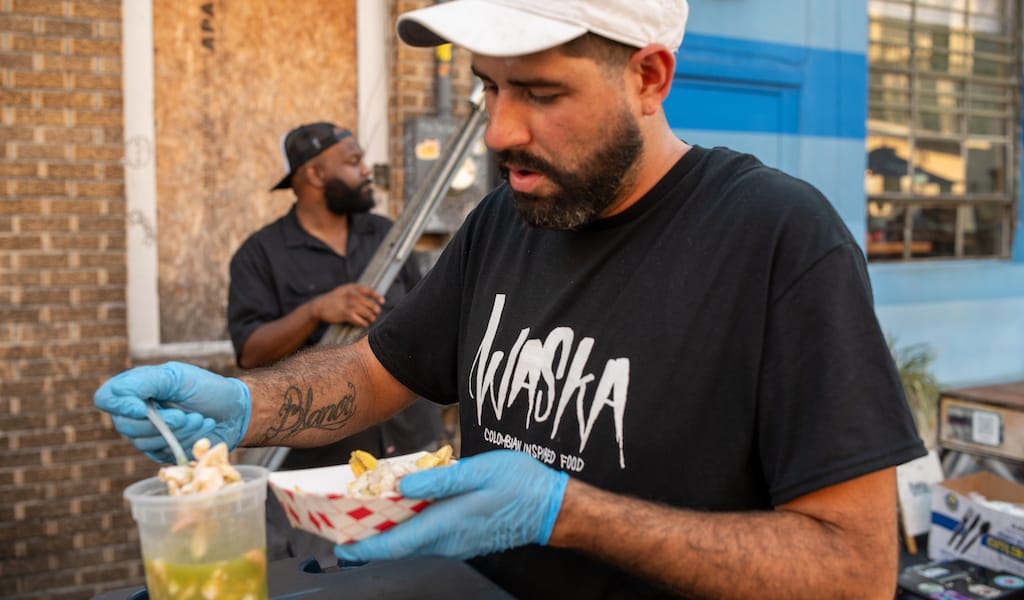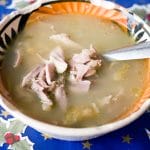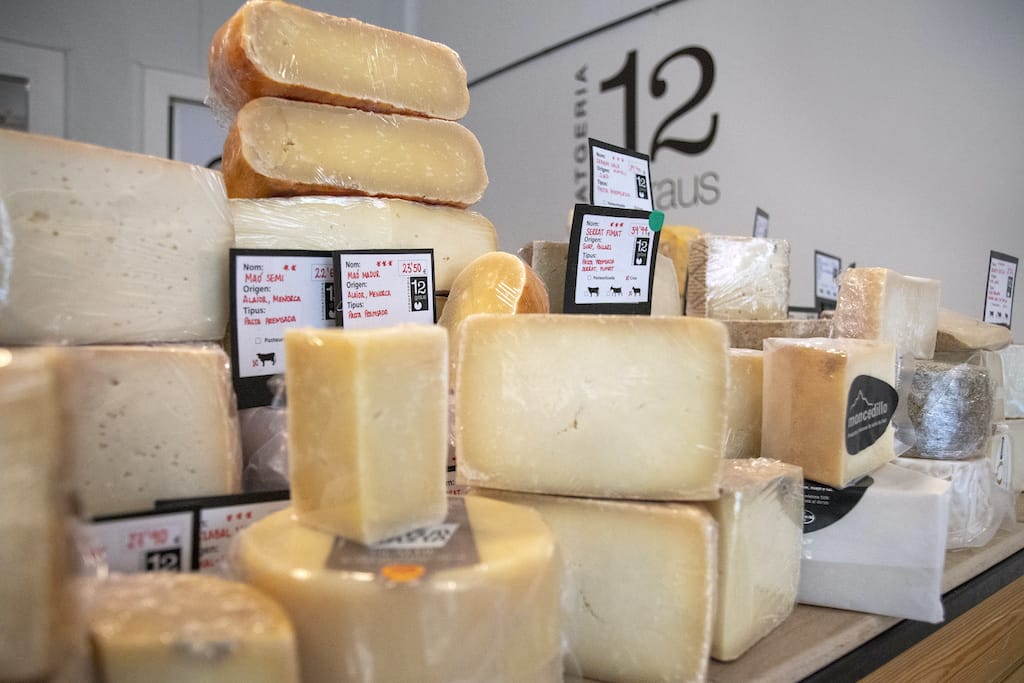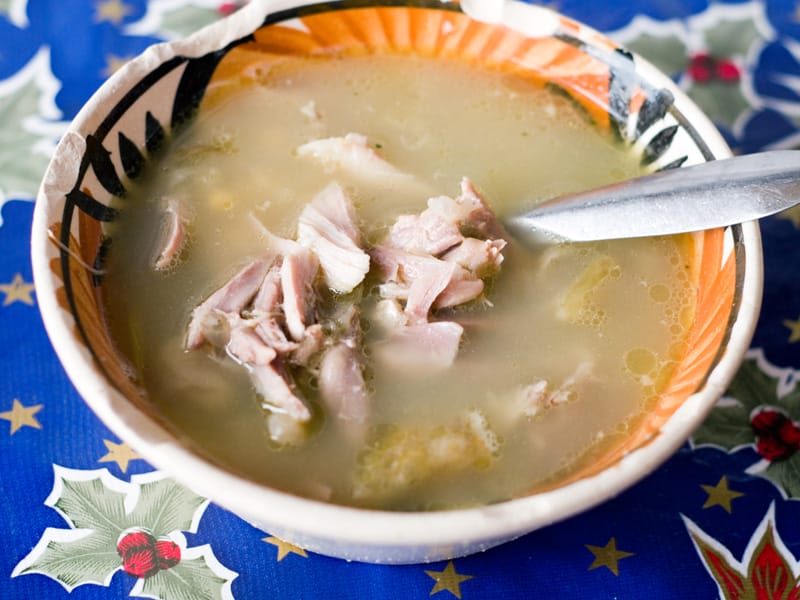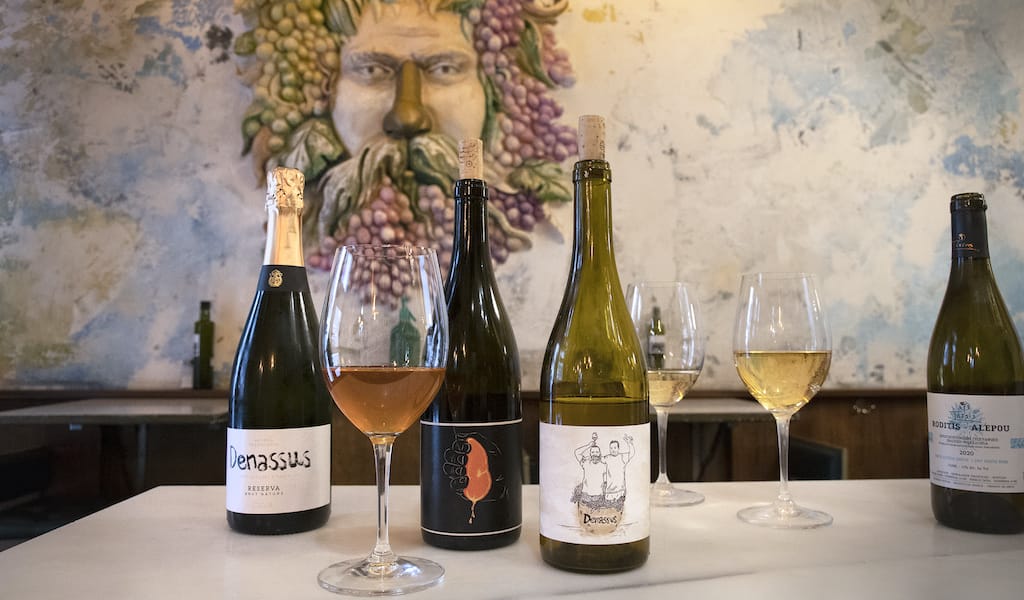The flames of the late afternoon New Orleans sun flickered around Chef Chris Blanco like a piece of meat on the grill, the blistering heat a harbinger of the record highs that would soon engulf New Orleans and the Gulf South. But Blanco, a native of Bogota, Colombia, appeared cool as he carefully constructed arepas, topping the cheese-stuffed, cornmeal-dough disks with marinated grilled steak or chicken and a bright cilantro sauce.
Fried plantains provided a welcomingly sweet counterpoint to the dense, savory arepas. It was the final show of the season at the Music Box Village in the 9th Ward, a quirky art installation of musical houses that can be played like instruments, and Blanco’s popular Colombian street food pop-up, Waska, was the featured food vendor, and he was busy. Blanco worked with alacrity as he took orders, passed out pagers that let the guests know when their food was ready, and built plate after plate, all with a smile in the withering heat and humidity of early summer.
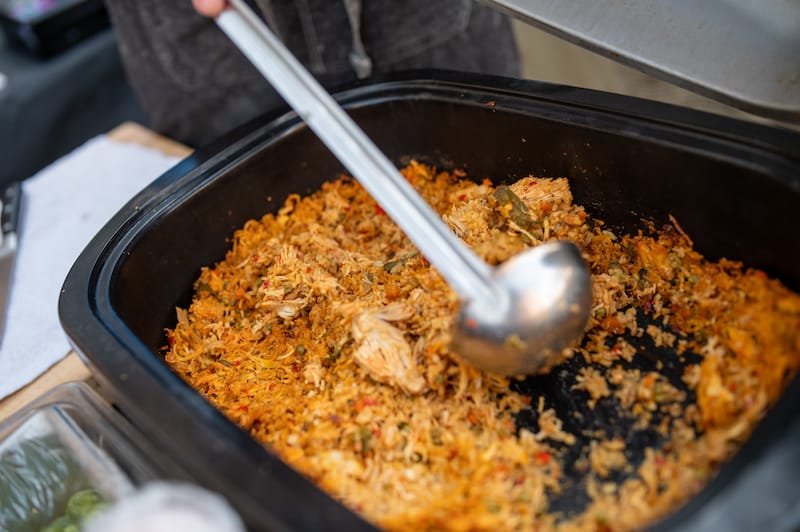
When we next saw Blanco, he was serving a menu of ceviches and arroz con pollo outside of Pepp’s Pub in the Marigny, a pet-friendly neighborhood bar that features different pop-up restaurants nightly.
“Too hot for flames,” Blanco said, smiling widely, explaining that he was onto his summer menu.
The only heat emanated from a slow cooker that held the arroz con pollo. It smelled incredible.
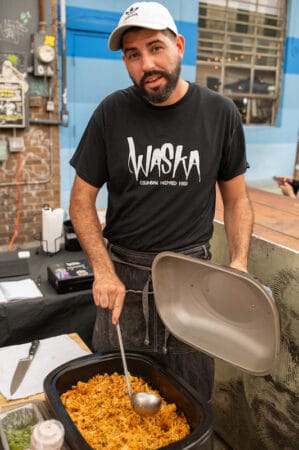
Since forming Waska, Blanco has kept a breakneck schedule, appearing at different local breweries and bars throughout the city, introducing New Orleanians to his unique take on Colombian food. But what is Waska?
“I was born in Bogota, the capital of Colombia, and we would always go to my stepdad’s farm in Guasca,” said Blanco, recalling the bucolic inspiration behind the name. “But it’s G.U.A.S.C.A. – Not W.A.S.K.A. – so I just kind of like modernized it; like, Americanized it, but it’s a homage to my family.”
But unlike many cooks, who learned at the feet of their relatives, Blanco took a different path.
“Who taught me how to cook?” said Blanco, questioningly, then answered, “Myself. You know, [in] kitchens. You work in professional kitchen. I started just to make money. And then it became a career.”
Blanco, 34, started his restaurant career in Miami, where he moved at the age of 13. But it was during a cooking stint on the West Coast that he discovered that restaurant kitchens weren’t just a way to make money, but to feed his passion.
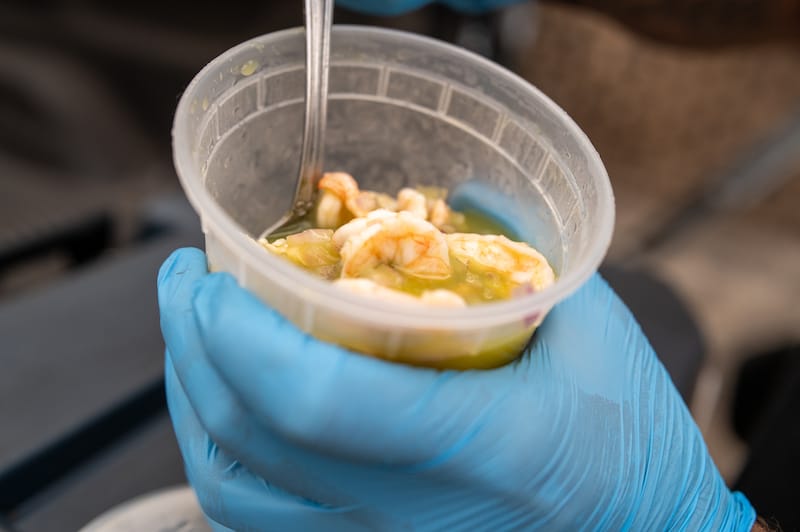
“I lived in San Francisco for a while and that’s when my mind was really opened about food,” said Blanco of his culinary epiphany, “I taking it seriously. Seeing the produce they had out there and what they were doing with the food, and obviously the Mexican culture. You know, it’s hard not to fall in love with Mexican food out there.”
Blanco shows his love with a delicious, verdant shrimp aguachile. Aguachile, a ceviche-style dish of shrimp cooked in lime juice, is traditionally a Mexican dish, but Waska puts a decidedly Colombian spin on it, replacing the traditional lime juice with lulo juice, from the orange-like fruit native to Colombia with its sweet and sour citrus profile. When combined with the jalapeños, cilantro and avocado, Blanco’s milder and slightly sweeter Colombian take on aguachile is light and refreshing, with a perfect balance between heat and citrus.

Like many great chefs that eventually made their home in New Orleans, Blanco cooked in cities across the United States, including a Latin fusion restaurant in New Hampshire where he was the head chef. But he originally came to New Orleans to help out a friend.
“One of my best friends was living here and he needed a roommate,” said Blanco. “I wanted to get out of Miami. So I came over and just fell in love.”
And if the lines that form wherever Waska pops up are any indication, the love is mutual.
“It’s think just the Creole flavors,” Blanco offers when asked why Colombian food translates so well to New Orleans. “You know, that’s really what I like in Colombia – the coast, Cartagena, Barranquilla – the way they season their food is just delicious, like the Creole flavors. So I think it makes a lot of sense, using tomatoes and onions, garlic. That’s a base of many dishes. One of my favorite sauces is hogao, which is literally just tomato, onions and garlic slowly stewed until you get a nice, thick sauce. And I feel like that people love it here because it’s very similar to [the New Orleans] palate.”
His description immediately recalled the base of both Shrimp Creole and Creole Jambalaya.
Blanco’s ability to borrow flavors from across Latin America without losing sight of his Colombian roots fits perfectly with the Creolized foodways of New Orleans. But even with the dishes that hew most closely to his homeland, he exercises creativity.
“I do change my menu a lot,” he said, gesturing toward his summer menu. “But I do try to keep the arepas. My arepas are like Colombian empanadas, deconstructed. What I do is I use the yellow corn dough, which fries really well, and I stuff it with cheese and then I top them with chicken, beef, plantains – really whatever comes to mind. And that’s my top seller – I guess you’d call that my signature dish.”
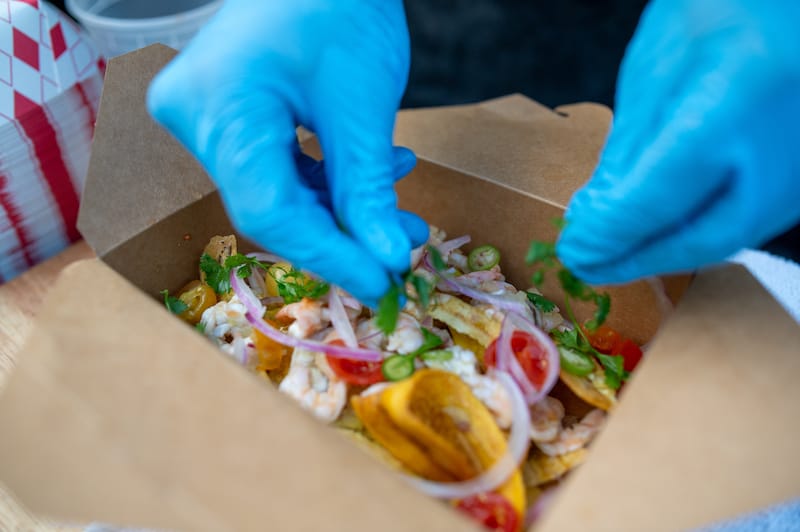
The arepas we had at Music Box Village a week earlier, bursting with cheese and piled high with beef and chicken, respectively, were shelved temporarily due to the blazing heat, but they were still very much on our mind. But the ceviche, aguachile, and arroz con pollo were the perfect summertime fare to pair with a cold beer from Pepp’s. And as always, Waska’s legions of fans are happy to indulge in whatever the chef offers. And Blanco is happy to be part of the vibrant scene that has added variety to the classic Creole lineup of the New Orleans food scene.
“Honestly, ever since I started the pop-up, I’ve been going out to eat at pop-ups and not really restaurants,” said Blanco. “And it’s just beautiful to see just the hustle that everybody has and the creativity with the food they believe in. There are so many good pop-ups. Then you build friendships – and it’s hard not to support your friends!”
Eventually, Blanco hopes to translate the success of his pop-up into a food truck, which will allow him the same mobility but with more consistent conditions. But no matter where he is cooking, his mission remains the same.
“Waska is my interpretation of my heritage growing up as a Colombian and then living in America and having a different experience,” said Blanco. “As a cook, it’s like, how do I tell my story and who I am – my identity – with food? I think Waska represents who I am. I use Colombian flavors, authentic flavors, authentic sauces, like the way I marinate my chicken, stuff like that, but also represent how I’ve grown up in America with with the foods that I’ve cooked and the places I have been.”
In our opinion, Waska: mission accomplished.
Waska
Check Instagram for upcoming pop-up locations and times.
https://www.instagram.com/waska_nola/
https://www.waskanola.com/
James CullenJames Cullen
Published on July 24, 2023
Related stories
April 5, 2023
BarcelonaCheese has a very long, storied past in Catalonia, as we wrote in the previous parts of this series. But what do the present and future of Catalan cheesemaking look like? The 21st century has seen cheesemaking flourish dramatically in Catalonia, thanks to increasing interest in and appreciation of culinary traditions and trends worldwide, not…
June 11, 2013
Mexico CityCaldos de Gallina Luis – which a friend had been raving about to us for months before we finally made it there – is essentially a street food stand that has been trussed up to look more like a sidewalk café. Just a short walk from the Insurgentes metro stop, the venue is located on…
March 1, 2023
BarcelonaDenassus can be found in a narrow space on Blai Street in Barcelona’s Poble Sec neighborhood. Here, the bar occupies nearly half the room, with little tables lining the other side. Upon entry, we are greeted by the jubilant god of wine himself: the giant face of Bacchus, covered in grapes, looks down on us…







































